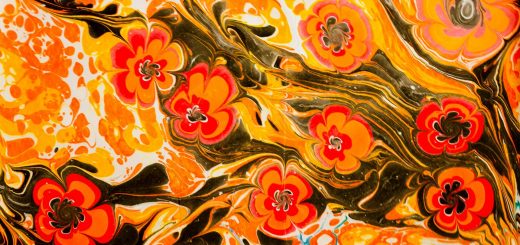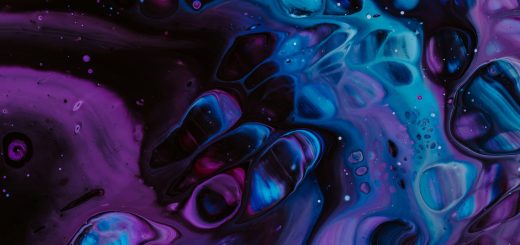The Mythological Creatures of the Underworld

Hey there, amazing readers! 🖐️ Just a quick note: yes, we know there are a lot of ads here. Trust us, we get it—it’s not the prettiest look, but they help us keep this blog alive and kicking. Those pesky little ads cover the costs of all the behind-the-scenes magic, from hosting and tech stuff to creating content we hope you’ll love.
We’re committed to delivering quality posts, and your support (even just sticking around despite the ads) means everything to us. So, bear with us, and thanks for helping us keep the good vibes rolling. Now, on to the fun stuff! 😉
TRANSLATE BUTTON AT THE END OF THE ARTICLE
A Quick Overview
When we think of the underworld, images of darkness, shadows, and eerie silence often come to mind.
However, beneath this foreboding exterior lies an entire universe filled with captivating mythological creatures.
These beings, born from ancient stories, have always fascinated us.
They embody our fears, hopes, and even our understanding of life and death.
This article dives deep into the mythology surrounding underworld creatures, exploring their origins, characteristics, and cultural significance.
Exploring the Enigmatic World of Underworld Creatures
The underworld isn’t simply a gloomy graveyard.
It’s a vivid tapestry of life beyond life, where various creatures reside.
Myths tell us about their roles and how they interact with the living.
From fearsome beasts to benevolent spirits, underworld entities serve as both guardians and guides.
Complex Creatures: Each creature carries its own backstory, often reflecting the culture from which it originates.
For instance, the ancient Greeks had a rich collection of characters, including deities and spirits, that populated their underworld tales.
Dual Nature: Many of these beings exhibit dual characteristics.
They can be protective yet terrifying, comforting yet unsettling.
Cerberus, for example, is a fierce guardian but also crucial for maintaining order in the underworld.
Symbolism: Each creature often symbolizes a deeper truth about humanity.
The Furies, for example, represent vengeance and justice, reminding us of the consequences of our actions.
Modern Interpretations: In today’s storytelling, whether in books, films, or video games, these ancient creatures still thrive.
They evolve, reflecting our current fears and desires, yet remain rooted in their mythical origins.
Global Perspectives: It’s fascinating to see how different cultures interpret their underworld beings.
While Greek mythology features Hades, Hindu mythology speaks of Yama, the god of death, showcasing a rich diversity of beliefs.
Personal Connection: I’ve always found a strange comfort in these tales.
They remind us that fear of death is universal, and through these myths, we find ways to grapple with that fear.
Storytelling Tradition: The stories of these creatures have been passed down through generations, often morphing with each retelling.
This oral tradition has kept the allure of these beings alive, allowing us to connect with our ancestors in a unique way.
Artistic Representation: From ancient pottery to modern movies, artists have depicted these creatures in countless forms.
Their visual portrayal adds another layer to our understanding of their significance in myth.
Psychological Insights: Many psychologists believe that these mythical beings emerge from our subconscious.
They embody our deepest fears and desires.
Engaging with these stories helps us confront those emotions.
Lessons to Learn: Ultimately, underworld creatures teach us about balance.
They remind us that death is part of life and that we must find peace with our mortality.
The Origins of Mythological Underworld Beings
The origins of these creatures are as varied as the cultures that birthed them.
They often arise from a need to explain the unexplainable—death and what comes after.
Cultural Roots: Many underworld beings originate from ancient rituals and practices.
For example, in Egyptian mythology, gods like Osiris were central to beliefs about the afterlife.
Folklore Influences: Local folklore also shapes the characteristics of these creatures.
In some cultures, they are viewed with respect, while in others, they evoke fear.
Environmental Influences: The natural world often inspires the traits of these beings.
Creatures associated with darkness or decay frequently embody elements like shadow, silence, or even storms.
Literary Evolution: As literature evolved, so did the portrayals of these beings.
Writers like Homer and Virgil shaped our understanding of the underworld with epic tales that introduced complex characters.
Religious Significance: Many beings were worshipped as deities.
Their stories were integral to religious practices, influencing how people viewed morality and justice.
Symbolic Beginnings: The earliest myths often served a symbolic purpose.
They represented humanity’s struggles with existence and the unknown.
Historical Changes: Over time, the meanings and roles of these beings shifted.
Modern interpretations often reflect contemporary societal values and fears.
Cultural Syncretism: As cultures merged, so too did their mythologies.
This blend created hybrid creatures that reflect a mixture of beliefs and characteristics.
Personal Impact: Growing up, I was fascinated by how these myths could reveal so much about human nature.
They acted as mirrors, reflecting our values and fears.
Legacy: The legacy of these creatures is vast.
They continue to inspire storytellers, artists, and thinkers.
Their origins remind us of our quest to understand life and death.
Chthonic Deities: Guardians of the Underworld Realm
Chthonic deities are pivotal figures in the underworld mythology.
They serve as guardians, guiding souls through the afterlife.
Definition: The term "chthonic" comes from ancient Greek, meaning "of the earth." These deities represent the earth’s depths and the afterlife.
Key Figures: In Greek mythology, Hades is the most well-known chthonic deity.
He rules the underworld, overseeing the fate of souls.
Roles and Responsibilities: Chthonic deities often have the task of judging souls, determining their fate based on their earthly actions.
This creates a moral dimension to their existence.
Contradictory Nature: While they may invoke fear, they also offer protection.
They maintain order, ensuring souls find their rightful place.
Ceremonial Importance: Various cultures held rituals in honor of chthonic deities, believing these acts could appease them and ensure safe passage for the deceased.
Cultural Variations: Different cultures have their own chthonic deities.
For example, in Roman mythology, Pluto takes on a similar role to Hades, emphasizing the universality of these figures.
Interactions with the Living: Chthonic gods often interact with the living, granting them wisdom or omens.
This adds a dynamic layer to their character.
Modern Depictions: Today, we see chthonic deities in literature and media, often portrayed as misunderstood or complex figures rather than just fearsome rulers.
Personal Reflections: I find it interesting how these deities remind us that we are all part of a larger cycle of life and death.
They prompt us to consider our legacies.
Legacy and Influence: The influence of chthonic deities extends beyond mythology.
They play a crucial role in literature, art, and psychology, showing their lasting impact on our understanding of existence.
The Energetic Furies: Avenging Spirits of the Damned
The Furies, also known as the Erinyes, are fierce avengers in Greek mythology.
Their presence in the underworld is both powerful and haunting.
Origins: The Furies originated from the blood of Gaia, the Earth Mother, symbolizing the consequences of wrongdoing.
They embody primal forces of justice.
Appearance: Often depicted with snakes for hair and bloodshot eyes, they are fearsome to behold.
Their frightening appearance underscores their serious role.
Roles: The Furies pursue wrongdoers, ensuring they face the consequences of their actions.
They represent moral order, tirelessly seeking justice.
Cultural Impact: Their presence in ancient Greek drama emphasized the importance of justice and moral accountability.
They served as reminders of the repercussions of one’s actions.
Empathy in Vengeance: Interestingly, the Furies also evoke sympathy.
They are not merely cold-hearted; they act out of a sense of duty, driven by a need to restore balance.
Modern Interpretations: Today, we see the Furies in literature and film as complex characters who grapple with their roles.
They often symbolize the internal struggle between vengeance and forgiveness.
Psychological Symbolism: In psychology, the Furies can represent our inner conflict—the struggle between our desires for justice and the need for empathy.
Personal Reflections: I often think about how the Furies remind us that justice is a nuanced concept.
They encourage us to consider multiple perspectives before passing judgment.
Lessons in Balance: The Furies teach us about the importance of balance in life.
While justice is essential, it must be tempered with compassion.
Legacy: Their legacy continues to influence modern storytelling, reminding us that our actions, good or bad, come with consequences.
Cerberus: The Three-Headed Guardian of the Underworld
Cerberus, the infamous three-headed dog, stands as one of the most recognizable figures in underworld mythology.
His role is both fascinating and complex.
Origins: In Greek mythology, Cerberus is the offspring of the monsters Typhon and Echidna.
His intimidating lineage sets the tone for his character.
Physical Characteristics: Cerberus is often depicted with three heads, a serpent tail, and a mane of snakes.
His terrifying appearance serves to deter intruders from the underworld.
Guardianship Role: As the guardian of the gates to the underworld, Cerberus ensures that souls enter but do not escape.
His presence signifies the boundary between life and death.
Symbolism of Loyalty: Interestingly, despite his fearsome reputation, Cerberus embodies loyalty.
He remains devoted to Hades, showcasing unwavering fidelity.
Cultural Interpretations: Cerberus appears in various forms across cultures.
In some traditions, he is seen as a protector, while in others, he evokes fear and trepidation.
Modern Adaptations: Today, Cerberus often appears in film and literature, typically as a fearsome guardian.
Yet, contemporary interpretations sometimes explore his softer side.
Psychological Interpretations: Cerberus can symbolize our fears and the boundaries we set in our lives.
He represents the internal barriers we may face when grappling with change or loss.
Personal Reflections: I find Cerberus to be a fascinating character.
His dual nature reminds me that even the most fearsome figures can have complex emotional layers.
Lessons on Boundaries: Cerberus teaches us about the importance of boundaries.
Just as he guards the underworld, we must protect ourselves from negative influences.
Cultural Legacy: Cerberus’s legacy is strong, inspiring countless stories and artworks.
He remains a symbol of vigilance and loyalty in our collective consciousness.
Demeter and Hades: A Love Story Beneath the Earth
The tale of Demeter and Hades is one of love, loss, and the eternal cycle of seasons.
Their relationship adds depth to our understanding of the underworld.
The Abduction: Hades’s abduction of Persephone, Demeter’s daughter, sets the stage for this myth.
It explores themes of love, longing, and the struggle for control.
Demeter’s Grief: In her despair, Demeter withdraws her gifts from the earth, leading to barren seasons.
Her emotional journey reflects the profound connection between love and loss.
The Reunion: Eventually, Persephone returns to the surface for part of each year, symbolizing the changing seasons.
This cycle illustrates the themes of rebirth and renewal.
Cultural Significance: Their story serves as an allegory for agricultural cycles, highlighting humanity’s reliance on nature and the earth’s fertility.
Complex Relationship: While Hades abducted Persephone, there is also a sense of respect and admiration between him and Demeter.
Their interactions reveal layers of complexity in their characters.
Modern Interpretations: Contemporary retellings explore the dynamics of their relationships, often portraying them as multifaceted characters rather than archetypal villains.
Symbolism of Balance: The story emphasizes the balance between life and death, love and loss.
It reminds us that both joy and sorrow are integral parts of existence.
Personal Insights: I find their story particularly moving.
It resonates with anyone who has experienced loss or longing, making it timeless.
Lessons on Acceptance: Demeter and Hades teach us about acceptance.
Embracing both joy and grief is essential to understanding life’s ebb and flow.
Legacy: Their myth continues to inspire artistic expressions, literature, and discussions about love, loss, and the cyclical nature of life.
The Role of Charon: The Ferryman of Lost Souls
Charon plays a critical role in underworld mythology.
As the ferryman of the dead, his tasks are essential for the passage of souls.
Origins: Charon, the son of Erebus and Nyx, is charged with transporting souls across the River Styx.
His lineage connects him to the darker aspects of existence.
Appearance: Often depicted as a grim figure, Charon is typically shown with a hooded cloak and a somber demeanor, reflecting the seriousness of his duties.
Payment for Passage: Souls must pay Charon for their passage, typically with an obol, a small coin.
This practice underscores the importance of burial rites and respecting the dead.
Cultural Significance: Charon’s role emphasizes the belief that the dead must be guided.
It reflects ancient customs surrounding funerary practices.
Interactions with Souls: Charon’s interactions with souls vary; some are fearful, while others show resignation.
His demeanor often mirrors the attitudes of those he ferries.
Modern Adaptations: In contemporary storytelling, Charon is often portrayed as a more complex character, sometimes evoking empathy for his eternal task.
Psychological Insights: Charon symbolizes the transition between life and death, prompting us to think about our mortality and what lies beyond.
Personal Reflections: I often think about Charon as a mediator between two worlds.
His presence reminds us that transitions are part of life’s journey.
Lessons on Preparation: Charon teaches us the importance of preparing for the inevitable.
Acknowledging our mortality helps us live more fully.
Legacy: Charon’s character remains influential, appearing in various forms of media, from literature to films, capturing our collective imagination.
The River Styx: A Crucial Crossing in Mythology
The River Styx serves as a symbolic boundary between the world of the living and the dead.
Its significance in mythology is profound.
Description: The Styx is often depicted as a dark, murky river, representing the unknown that lies beyond life.
Its ominous appearance adds to its mystique.
Cultural Importance: In Greek mythology, crossing the Styx signifies the transition to the afterlife.
It emphasizes the finality of death and the importance of proper burial rites.
Role in Myths: Many myths feature the Styx as a crucial element.
Souls must navigate its waters to reach the afterlife, highlighting the theme of passage.
Symbol of Fear: The Styx evokes fear and uncertainty, representing the unknown aspects of death.
It serves as a reminder of our mortality.
Modern Interpretations: Today, the River Styx appears in various forms of art and literature, often serving as a metaphor for transitions and personal journeys.
Psychological Symbolism: The Styx symbolizes the boundary between life and death, prompting introspection about our beliefs and fears surrounding mortality.
Personal Insights: The imagery of the Styx resonates with me, symbolizing the uncharted waters we all must navigate in life.
Lessons on Acceptance: The River Styx teaches us to accept the inevitability of death and the importance of facing our fears.
Legacy: Its legacy endures in storytelling, serving as a powerful symbol of the journey from life to death.
Cultural Impact: The River Styx has left a mark on various cultures, illustrating humanity’s universal contemplation of life, death, and the unknown.
The Minotaur: A Creature of Labyrinthine Legend
The Minotaur, with his half-man, half-bull form, is a fascinating creature of mythology.
His story intertwines themes of sacrifice, fate, and the human psyche.
Origins: The Minotaur was born from a curse placed on Queen Pasiphae of Crete.
His existence reflects the consequences of human desires and divine retribution.
The Labyrinth: The creature resides in a labyrinth designed by Daedalus, symbolizing the complexities of the mind and human experience.
This intricate setting adds depth to his character.
Symbol of Isolation: The Minotaur’s imprisonment in the labyrinth represents the isolation and inner turmoil many face.
He embodies the struggle between beast and man.
Cultural Relevance: The story of the Minotaur speaks to themes of heroism and sacrifice.
These narratives resonate with the trials we face in our own lives.
Modern Interpretations: Contemporary retellings often explore the Minotaur’s perspective, revealing his inner conflicts and emotions.
This adds layers to his character.
Psychological Metaphor: The Minotaur can represent our inner demons—the parts of ourselves we struggle to confront.
Engaging with this myth can encourage personal reflection.
Personal Insights: I find the Minotaur’s story particularly intriguing.
It reminds me that each of us has a labyrinth within, filled with challenges to navigate.
Lessons on Courage: The tale teaches us about the importance of facing our fears, no matter how daunting they may appear.
Legacy: The Minotaur continues to inspire countless stories and artworks, symbolizing the human condition and the quest for understanding.
Cultural Impact: His legend endures, reminding us of the complexities of human nature and the timeless struggle between light and darkness.
The Role of Ghosts and Shades in Underworld Tales
Ghosts and shades play pivotal roles in underworld myths, bridging the gap between the living and the dead.
Their stories enrich our understanding of mortality.
Definitions: Ghosts are often spirits of the deceased who linger, while shades are the souls of the dead without physical form.
Both serve as reminders of our connections to the past.
Cultural Interpretations: Different cultures have their beliefs about ghosts.
In some traditions, they are respected and honored, while in others, they evoke fear.
Personal Encounters: Many people report encounters with ghosts, adding to the mystique surrounding them.
These experiences often evoke deep emotions and questions about the afterlife.
Role in Storytelling: Ghosts and shades frequently appear in literature and folklore, serving as messengers or guides for the living.
They highlight the importance of remembrance.
Psychological Symbolism: These entities can symbolize unresolved issues or unfinished business.
Engaging with ghost stories can encourage personal reflection on our lives.
Lessons on Legacy: Ghosts remind us that our actions have lasting impacts.
They encourage us to consider how we want to be remembered.
Personal Insights: I often find comfort in ghost stories.
They remind me that our loved ones continue to exist in some form, encouraging us to cherish memories.
Cultural Legacy: The tales of ghosts and shades enrich our cultural narratives, connecting generations and fostering a sense of continuity.
Modern Adaptations: Today, ghosts appear in diverse media, often reimagined to reflect contemporary fears and challenges.
They continue to resonate with audiences.
Symbol of Connection: Ultimately, ghosts and shades symbolize the enduring connections we have with those who came before us.
They serve as powerful reminders of the cycles of life and death.
Overcoming Fear: The Positive Side of Underworld Myths
While underworld myths often evoke fear, they also offer valuable lessons and insights.
Engaging with these stories can help us confront our fears.
Understanding Mortality: These myths provide a lens to examine our mortality.
They encourage us to face our fears rather than shy away from them.
Coping Mechanisms: Many cultures use these tales as coping mechanisms, allowing individuals to process grief and loss.
They offer a framework for understanding the human experience.
Empathy and Compassion: Underworld creatures often evoke empathy, revealing the complexities of life and death.
Connecting with these stories fosters compassion for ourselves and others.
Exploring the Unknown: Engaging with these myths invites us to explore the unknown.
It encourages curiosity about the afterlife and what lies beyond our existence.
Personal Growth: Overcoming fear can lead to personal growth.
By confronting the darker aspects of life, we develop resilience and strength.
Cultural Reflection: These myths often mirror societal values.
They provide insight into how cultures navigate fear and uncertainty.
Lessons on Balance: Underworld myths teach us about the balance between light and darkness.
Embracing both aspects allows us to appreciate the richness of life.
Personal Insights: I’ve found that exploring these stories helps me confront my fears.
They remind me that fear is a natural part of the human experience.
Therapeutic Value: Engaging with underworld myths can be therapeutic.
They provide a safe space to explore complex emotions and experiences.
Legacy of Resilience: Ultimately, these myths remind us of our resilience.
They show that even in darkness, there is hope and the possibility of renewal.
Celebrating the Creatures of the Underworld in Pop Culture
Underworld creatures have a profound impact on pop culture.
They continue to inspire stories, art, and media, capturing our collective imagination.
Literature: From ancient epics to modern novels, these creatures appear in countless works of literature.
They often serve as central figures, embodying complex themes.
Film and Television: Movies and TV shows often depict underworld beings, reimagining their stories for contemporary audiences.
These adaptations keep the myths alive in popular culture.
Video Games: Many video games incorporate underworld mythology.
Players engage with these creatures, navigating their challenges and adventures.
Artistic Expression: Artists have long been inspired by underworld creatures, creating stunning works that reflect their allure and complexity.
Merchandising and Fandom: The popularity of these creatures has led to a thriving market for merchandise.
Fans celebrate their favorite characters through collectibles, costumes, and events.
Influence on Fashion: Elements of underworld mythology often influence fashion trends, with dark themes and motifs appearing on runways and in streetwear.
Cultural Events: Festivals and events often celebrate these creatures, showcasing performances, art installations, and discussions about their significance in our lives.
Personal Connection: I enjoy seeing how these creatures resonate with people today.
It’s fascinating to witness their evolution in modern storytelling.
Community Building: Engaging with underworld myths brings people together.
Fans often form communities to discuss and celebrate these shared interests.
Enduring Legacy: The legacy of underworld creatures continues to grow, reminding us of our fascination with life, death, and everything in between.
Conclusion
The mythological creatures of the underworld serve as powerful symbols of our fears and aspirations.
They weave rich tapestries of stories that resonate through time, bridging the gap between life and death.
By exploring these myths, we not only confront our fears but also celebrate the complexities of existence.
Each tale, each creature, invites us to reflect on our lives and the legacies we leave behind.
The underworld isn’t just a place of darkness; it’s a realm of possibility, growth, and connection—a reminder that every ending is but a new beginning.

The Enlightenment Journey is a remarkable collection of writings authored by a distinguished group of experts in the fields of spirituality, new age, and esoteric knowledge.
This anthology features a diverse assembly of well-experienced authors who bring their profound insights and credible perspectives to the forefront.
Each contributor possesses a wealth of knowledge and wisdom, making them authorities in their respective domains.
Together, they offer readers a transformative journey into the realms of spiritual growth, self-discovery, and esoteric enlightenment.
The Enlightenment Journey is a testament to the collective expertise of these luminaries, providing readers with a rich tapestry of ideas and information to illuminate their spiritual path.
Our Diverse Expertise 🌟
While our primary focus is on spirituality and esotericism, we are equally passionate about exploring a wide range of other topics and niches 🌍📚. Our experienced team is dedicated to delivering high-quality, informative content across various subjects ✨.
To ensure we provide the most accurate and valuable insights, we collaborate with trusted experts in their respective domains 🧑🏫👩🏫. This allows us to offer well-rounded perspectives and knowledge to our readers.
Our blog originally focused on spirituality and metaphysics, but we’ve since expanded to cover a wide range of niches. Don’t worry—we continue to publish a lot of articles on spirituality! Frequently visit our blog to explore our diverse content and stay tuned for more insightful reads.







